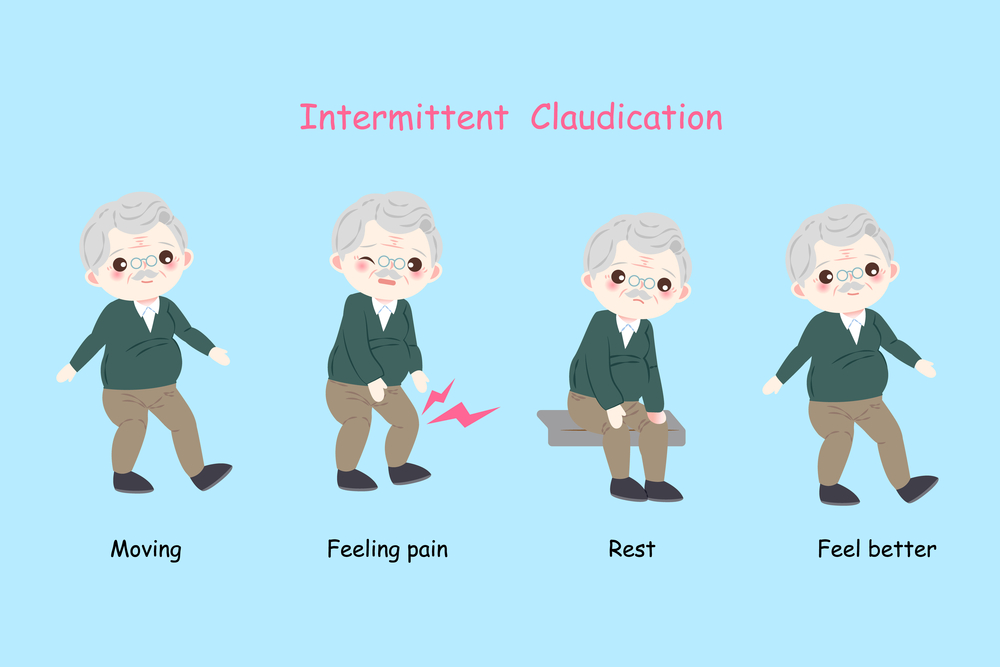Intermittent claudication is a symptom typically associated with peripheral arterial disease (PAD), a condition characterized by reduced blood flow to the lower extremities. It refers to pain, cramping, or discomfort in the leg muscles that occurs during physical activity and is relieved with rest. Here are some signs and characteristics of intermittent claudication:
- Pain or Discomfort: The primary symptom of intermittent claudication is pain or discomfort in the leg muscles, usually in the calf, thigh, or buttock. The pain is typically described as a cramping, burning, or aching sensation.
- Location: The pain in intermittent claudication is often located in the muscle group affected by reduced blood flow. It commonly occurs in the calf muscle, but it can also affect the thigh, buttock, or lower leg.
- Activity-Related: The pain or discomfort in intermittent claudication is typically triggered or exacerbated by physical activity or exercise. Walking, climbing stairs, or engaging in any activity that requires increased blood flow to the leg muscles can provoke the symptoms.
- Distance and Duration: The pain of intermittent claudication usually follows a predictable pattern. It occurs after walking a certain distance or performing a specific activity and tends to subside with rest. The distance a person can walk before experiencing symptoms, known as the “claudication distance,” can vary depending on the severity of the underlying arterial blockage.
- Relief with Rest: One characteristic feature of intermittent claudication is that the pain or discomfort is relieved with rest. The individual may need to stop walking or rest for a few minutes to allow the leg muscles to recover and the pain to subside.
- Absence of Pain at Rest: Intermittent claudication typically occurs during physical activity but is not present at rest. If pain persists even at rest or during the night, it may suggest a more severe form of arterial disease, such as critical limb ischemia, and requires immediate medical attention.

Intermittent claudication is just one possible symptom of peripheral arterial disease, and the severity and specific characteristics of the symptoms can vary from person to person. If you experience any signs or symptoms of intermittent claudication, it is advisable to consult a healthcare professional for proper evaluation, diagnosis, and appropriate management of the underlying condition.
